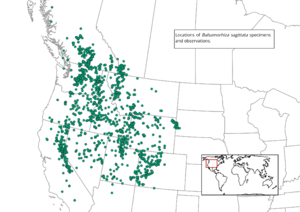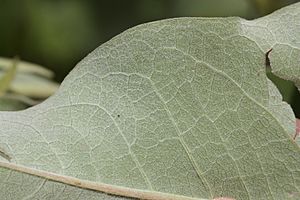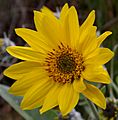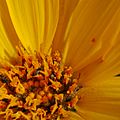Arrowleaf Balsamroot facts for kids
Quick facts for kids Arrowleaf Balsamroot |
|
|---|---|
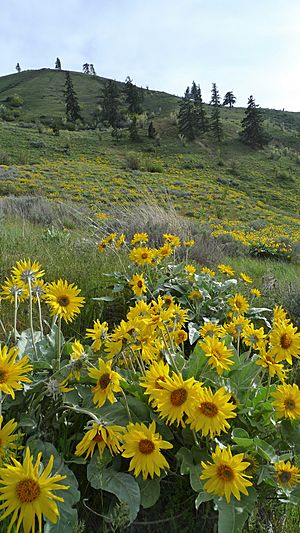 |
|
| Balsamorhiza sagittata near Horselake, Chelan County Washington | |
| Scientific classification | |
| Synonyms | |
|
The arrowleaf balsamroot (Balsamorhiza sagittata) is a beautiful flowering plant found across western North America. It belongs to the sunflower family, just like the big sunflowers you might see in fields! This plant grows widely in western Canada and much of the western United States. A famous explorer and plant expert, Meriwether Lewis, found a sample of this plant way back in 1806.
Contents
Where Arrowleaf Balsamroot Grows
This plant naturally grows from British Columbia and Alberta in Canada, all the way south to northern Arizona and the Mojave Desert in California. You can also find it as far east as the Black Hills in South Dakota.
Arrowleaf balsamroot is very tough! It can grow in many different places. You might see it in mountain forests, open grasslands, or even dry desert areas. It doesn't need much water, so it can survive when it's very dry.
What Arrowleaf Balsamroot Looks Like
This plant is a perennial herb, which means it lives for more than two years. It has a deep taproot that can go over two meters (about 6.5 feet) into the soil! This helps it find water deep underground.
The plant grows a hairy stem that can be 20 to 60 centimeters (about 8 to 24 inches) tall. Its main leaves, found near the ground, are usually shaped like triangles and can be quite large, up to 50 centimeters (about 20 inches) long. Leaves higher up the stem are smaller and more narrow. All the leaves have smooth edges and are covered in fine hairs, especially on the underside.
The plant produces one or more bright yellow flower heads. Each flower head has a center of long, yellow, tube-shaped flowers called disc florets. Around the edge, there are bright yellow, petal-like flowers called ray florets, which can be up to 4 centimeters (about 1.5 inches) long. After the flowers bloom, they produce a small, smooth seed called an achene, which is about 8 millimeters (about 0.3 inches) long.
Animals like elk and deer enjoy eating this plant, especially the flowers and young seeds.
How People Use Arrowleaf Balsamroot
Food and Medicine
The arrowleaf balsamroot becomes ready to eat in late spring. Almost all parts of the plant can be used, especially the roots (which are often boiled) and the seeds. It can have a slightly bitter, pine-like taste. The leaves are best to pick when they are young, and they can sometimes taste a bit like citrus.
Many Native American groups, such as the Nez Perce, Kutenai, Cheyenne, and Bitterroot Salish, used this plant for both food and medicine. The seeds were very important for food or to make oil. In 1806, William Clark (from the Lewis and Clark expedition) noted that Native Americans ate the raw stems of the plant.
City Symbol
The city of Kelowna, British Columbia, Canada, has chosen the arrowleaf balsamroot as its official flower emblem. They call it the Okanagan Sunflower.
Gallery
-
Balsamorhiza sagittata in Grand Teton National Park, Wyoming, USA
See also
 In Spanish: Balsamorhiza sagittata para niños
In Spanish: Balsamorhiza sagittata para niños


